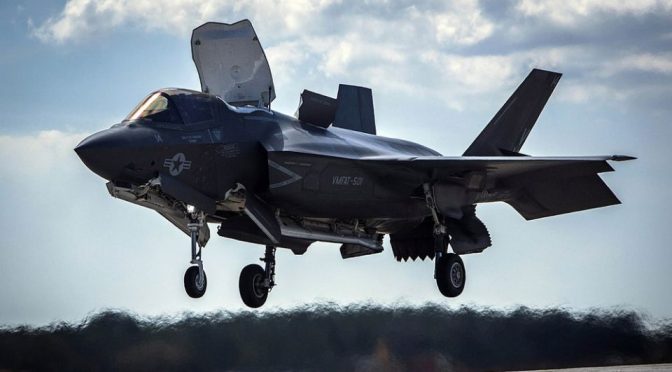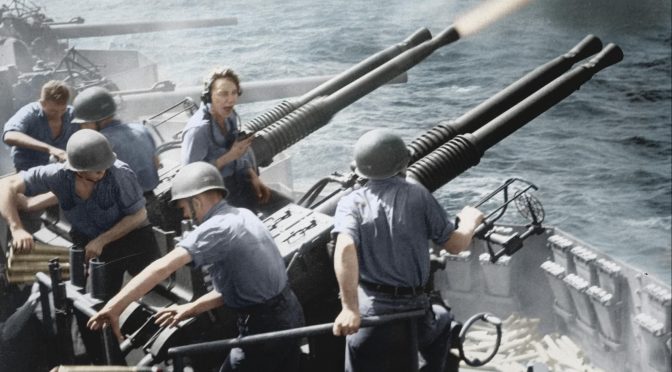By Duane J. Truitt
The U.S. Navy is faced with several big challenges in maintaining undersea warfare dominance – the domain of the fast attack nuclear submarine or “SSN.”
These challenges include the reemergence of a near peer naval threat that is a direct challenge to the entire U.S. Navy, including our SSN force. The current and growing undersea threat includes both advanced technology attack submarines (including nuclear, diesel-electric, and air independent propulsion variants) with advanced torpedoes and cruise missiles, and much increased numbers of adversary submarines, particularly in the Indo-Pacific theater. Another challenge comes from the rapidly escalating procurement and sustainment costs of ever-larger and more complex U.S. SSNs since the end of the Cold War.
These two challenges have resulted in a very large immediate deficit in U.S. SSN numbers,1 if not capabilities, that is expected to continue for decades. The Navy’s current planned way out seems to be to simply hope for the best, that the funding will materialize to build many more of today’s very large and expensive SSNs. That plan is increasingly seen as unlikely if not impossible given existing serious constraints on U.S. defense spending.
This situation is not unique to the submarine force. The Navy’s overall force structure assessment (FSA) is undergoing a significant revision due for release later this year.2 Navy leaders including outgoing CNO ADM John Richardson and VADM Bill Merz have stated on multiple occasions that the surface fleet is going to evolve with many more small surface combatants, with enhanced capabilities, and many fewer large surface combatants. Admiral Merz stated:
“You may see the evolution over time where frigates start replacing destroyers, the Large Surface Combatant starts replacing destroyers, and in the end, as the destroyers blend away, you’re going to get this healthier mix of small and large surface combatants.”
What is driving this mix to an overall surface fleet weighted toward smaller vessels? Cost. The cost to build, and then the cost to operate and maintain vessels is necessitating this shift from the current generation of surface warships dominated by large surface combatants. The same cost factors also inhibit submarine construction and operations, too. This is in fact a rebalancing in the age-old naval argument of capability versus capacity. The rebalancing is made possible by emerging technologies that allow the Navy to package enhanced capability into smaller hull forms, and to take advantage of new capabilities in cheap yet capable unmanned vessels. Yet today, the U.S. Navy still has no “small subsurface combatant” – just the very large Virginia-class SSNs that are evolving into even larger and more expensive hulls with the Block 5 and subsequent block versions.
The U.S. has relied on its total undersea dominance for nearly three decades since the collapse of the Soviet Union, but that dominance is already fading, and is projected to flip upside down within the next decade. While perversely, due to the projected retirement of the rest of the aging Los Angeles-class SSNs, U.S. submarine forces will continue to fall over the same period, from 51 boats today to a projected 42 within a decade. The principle reason for the inability to build and operate the much larger SSN fleet of 66 subs that the Navy now says it needs is lack of funding. Some suggest that the answer is extending the service lives (SLEPing) of the Los Angeles-class boats, but that is not a practical solution, even in the short term, let alone the long term, since the maintenance burden for very old submarines is much higher than for new vessels. SLEPing old SSNs would only exacerbate the existing near-crisis of maintaining our these SSNs in operable condition.
Some say our small SSN fleet size is also due to a lack of “industrial capacity,” but the ability of the United States of America to ramp up its industrial capacity in times of severe military need is clearly proven in actual U.S. history throughout both World War Two, and during the long Cold War. If the funds to build all the subs that we need are actually made available, American industry will almost certainly respond, and ramp up accordingly, as proven time and time again. Make the construction dollars available on a predictable, multi-year contracting basis, and existing yards will open new lines, and/or new yards will be built, workers trained, and supply chains expanded.
In the 1960s through the mid-1970s there were six U.S. shipyards building SSNs and SSBNs, and in just 13 years of production the yards produced 39 boats, an average of three per year while at the same time producing 31 boats in multiple classes of Polaris and Poseidon SSBNs over just a five-year period. That came to on average of more than nine nuke submarines delivered per year at its peak in the mid-1960s.
As to the dollars needed for an expanded SSN fleet, the current full construction cost of a Virginia-class Block 5 SSN with Virginia Payload Module (VPM) stands at $3.2 billion in 2018 dollars. For comparison, the Sturgeon class-SSNs were built in the late 1960s for approx. $130 million each – in 2019 dollars that would be approximately $726 million – about a fourth of the cost of a Block 5 Virginia boat.
These behemoth Block 5 Virginia SSNs, at approximately 10,000 tons submerged, are more than twice the displacement of Cold War SSNs in the Skipjack-class, Permit-class, and the numerically large Sturgeon-class boats (4,300 tons submerged displacement). And to make matters more challenging, current naval plans for the next generation SSN, now dubbed “New SSN”3 suggest an even larger attack submarine, perhaps 12,000 tons and likely to cost $4 billion to $6 billion or more in 2018 dollars (and not entering the fleet for a decade or more) to build, and similarly expensive to operate. The Seawolf-class of SSNs were of approximately the same displacement, and the very high cost associated with building and operating the Seawolf SSNs encouraged limiting the class of boats to three hulls after the end of the Cold War.
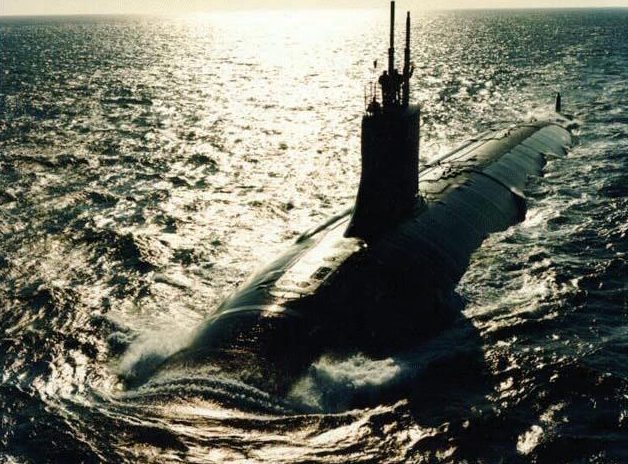
Note that not only does raw displacement drive up the construction cost of a SSN (the rule of thumb is you pay for ships by the ton), but it also drives up the lifetime operating costs of the SSN. Manning a Block 5 Virginia-class SSN with its 42 vertical launch cells requires a crew of approximately 140 officers and sailors, as compared to the 99 officers and sailors of a Sturgeon-class SSN.
So why are the current class American SSNs so large?
The answer includes land attack – the new mission assigned to SSNs by the Navy in the aftermath of the end of the Cold War, with the virtually overnight disappearance of its main naval adversary, the Soviet Navy. By the early to mid 1990s the U.S. Navy was busy retiring aged-out Cold War boats by the dozens and was still building as replacements the last Los Angeles-class SSNs. These boats were larger than their predecessors, primarily to make them faster and capable of keeping up as escorts with CVN carrier battle groups and later on, carrier strike groups. Such high cruising speeds were not a requirement for anti-shipping warfare (both ASW and anti-surface ship) and ISR – the two primary missions of Cold War era SSNs.
Later on, the more advanced Virginia SSNs – as a smaller, cheaper, and slightly reduced capability version of the small class of Seawolf SSNs – came along by the mid-2000s, adding length, tonnage, and vertical launch tubes capable of putting up as many as 12 Tomahawk missiles (a similar vertical launch tube arrangement by then had also been added to some of the last Los Angeles-class boats). However, those post-Cold War Tomahawks on SSNs were not, like their Cold War predecessors, equipped to engage moving naval targets as long range anti-ship missiles, but instead were Tomahawk Land Attack Missiles (TLAM), capable only of engaging fixed land targets. The Navy was also busy deploying large numbers of TLAMs on large surface combatants, both Ticonderoga-class cruisers and Arleigh Burke-class destroyers, for the same deep strike land attack mission the Navy had taken on in the 1990s and beyond.
The latest Block 5 Virginias add a new “Virginia Payload Module” that adds yet another 84-foot section to the hull aft of the sail containing four more vertical launchers carrying as many as 28 additional TLAMs for land attack. The stated purpose of the VPM was to attempt to make up for the planned retirement of four SSGNs (converted Ohio-class SSBNs that were “denuclearized” per the START strategic nuclear arms reduction treaty). But of course that conversion of SSBN to SSGN was a “make work” solution for the resulting excess Ohio SSBNs above treaty limits, which has now begat a “make work” mission for SSNs. All of which bloats the boat itself and makes it much more expensive to build and operate.
Adopting the deep strike land attack mission was an understandable response to the drastic and virtually overnight elimination of a significant near peer naval threat in the 1990s. Thus the Navy and its supporters in Congress converted the navy virtually overnight to a deep strike land attack force in order to become more relevant to evolving national security interests, but at the expense of full-spectrum competence. Otherwise, naval leaders and proponents feared an even more drastic fleet reduction than the 50 percent cut that was actually made after the end of the Cold War.
This “keep the Navy relevant in the Post Cold War era” mindset was also aided and abetted by the Intermediate Range Nuclear Forces (INF) Treaty of 1987 limits on “land based” intermediate range cruise missiles (IRCM) that strangely did not apply to “surface launched” (i.e., naval platforms). (Both the U.S. and Russia have now withdrawn from this treaty, effective later this year.) In any event, INF encouraged both the Russian and U.S. navies to deploy large numbers of land attack cruise missiles on surface warships.
Clearly a lot has changed since the Post Cold War-era began. The U.S. military today is no longer simply tasked with combating low-capability insurgent forces in various and sundry developing nations often situated well inland, nor does the INF treaty apply as of this year either.
With the well-documented fast growing maritime threat posed especially by China (whose fleet of attack submarines is currently estimated to number over 70 vessels, and is expected to continue to grow at a rapid rate thereafter), as well as a resurgent Russian Navy, the world of naval warfare has now transformed from a low threat environment into a serious challenge to U.S. naval dominance. The U.S. Navy now has a clear and overriding mission – to deter and if necessary fight and win a naval war against capable near peer forces. Projecting sea power ashore continues as a U.S. Navy mission, but that mission is best and most cost-effectively performed by naval aircraft (both carrier-based and land-based), not by submarines. Given all of the above factors, then, and the fact that naval shipbuilding budgets are constrained, including demands to simultaneously recapitalize aging CVNs and Ohio-class SSBNs, the Navy must go back to the drawing boards.
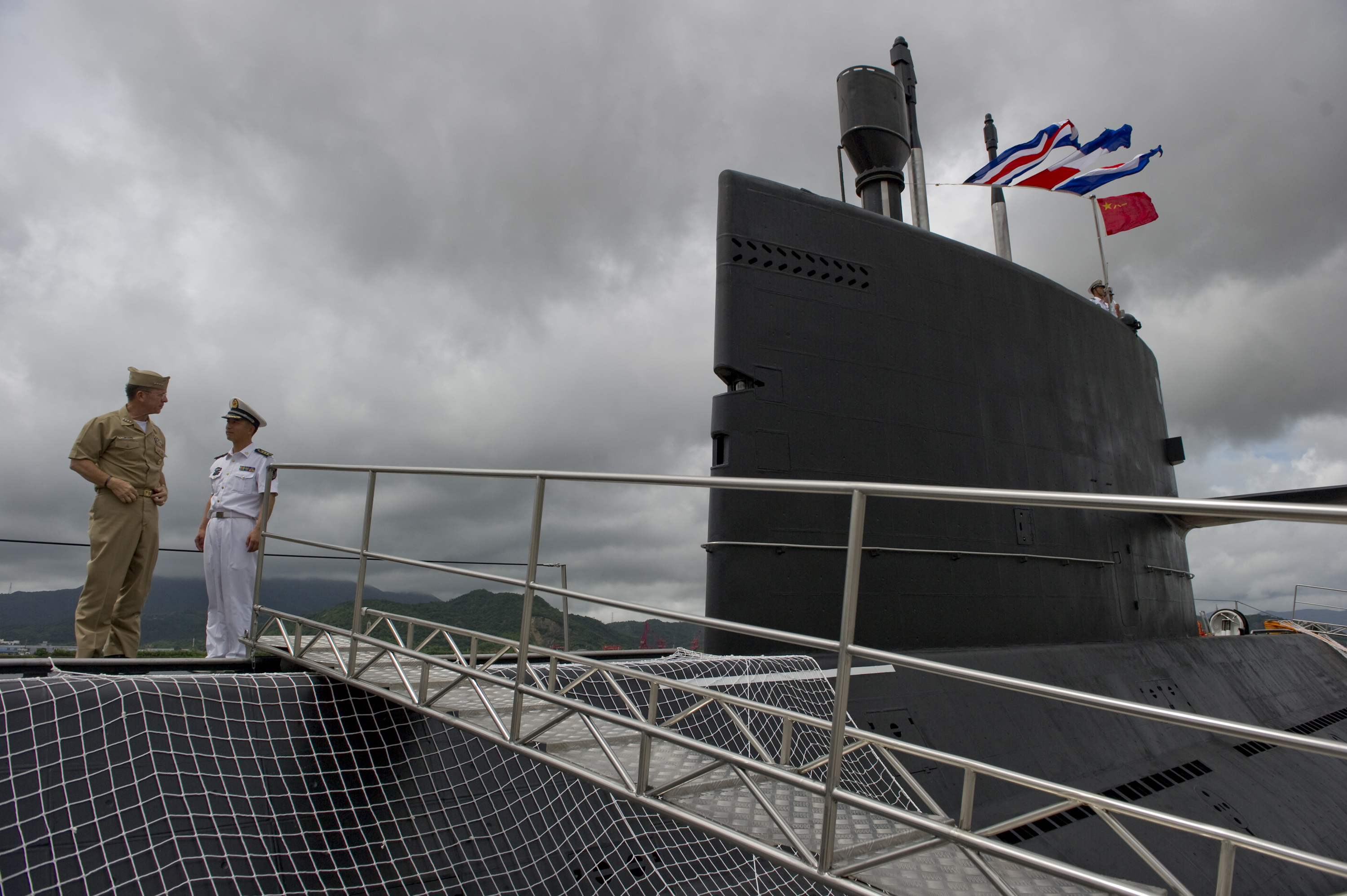
The Navy should consider designing a new SSN that is smaller and cheaper, and focused entirely on the anti-shipping and ISR roles – the historic roles of the SSN throughout the Cold War – with particular attention paid to building and operating many more new boats at a far faster build rate.
Size as measured in tons displacement, however, is not the only requirement and means of controlling cost – there is also the matter of modernization and capability. Obviously the technologies available today are far more advanced compared to those available in the 1960s and 1970s when the bulk of our Cold War era SSN fleet was built. For example, the later generations of U.S. submarines incorporated new propulsors – pump jets, rather than the older and noisier seven-bladed open screws on the Cold War era boats. Better sensors are also going into today’s boats, both sonars and “above the water” sensors, with photonic masts rather than periscopes, which allows more efficient interior hull design and better distribution of sensor data to various locations within the crew area. Better electronic warfare capabilities are also part of today’s fleet, and cyber warfare is increasingly a key area of focus in the 21st century.
Better weapons are also available today, although advancements in deployed submarine-launched weaponry have clearly lagged behind both our adversaries and even of USN surface forces and naval air wings in recent years. Existing SSNs are still using the old Mk 48 ADCAP 21-inch torpedo first deployed in the mid-1970s, though significantly upgraded over the decades. But as of today the only submarine-launched anti-ship cruise missile available is still the old Harpoon Block 1C that was developed in the 1970s, and as of today only one of our existing SSNs has even re-integrated the Harpoon, as of last year. A new “Maritime Strike Tomahawk” refit kit is slated to become available in 2021 which will provide a new very long range ASCM capability to both submarines and surface warships with VLS. Perhaps other existing ASCMs such as the new Naval Strike Missile, now slated for deployment on LCS and FFGX, can and may also be integrated onto U.S. submarines, along with LRASM in the coming years.
Additionally, it should also be recognized that for purposes of anti-submarine warfare which was the primary role of the Cold War SSN, and which is now becoming a priority again, the Mk48 ADCAP torpedo is likely “overkill” for use against submerged submarines. The power of a 650 pound warhead on the Mk 48 certainly is helpful for attacking large surface ships, with the ability to literally break a ship in half when detonated under the keel. Submerged submarines, however, do not require such explosive power because of the effect of submergence sea pressure.
The lightweight ASW torpedoes such as the Mk 46 and Mk 54 (12.75 inches diameter by 8 feet 6 inches long, and weighing just 508 pounds vs. 21 inches, 19 feet, and 3,695 pounds respectively for a Mk 48) have for decades been in use by the US Navy and our NATO allies deployed on surface warships and ASW aircraft. The lightweight torpedoes have warheads with weights of slightly less than 100 pounds – demonstrably sufficient to sink a submerged submarine. Indeed, one of the most effective ASW weapons in WWII, the “hedgehog,” had a much smaller warhead of just 35 pounds of TORPEX. It was demonstrated that typically only one or two hedgehog detonations were needed to sink a submerged submarine.
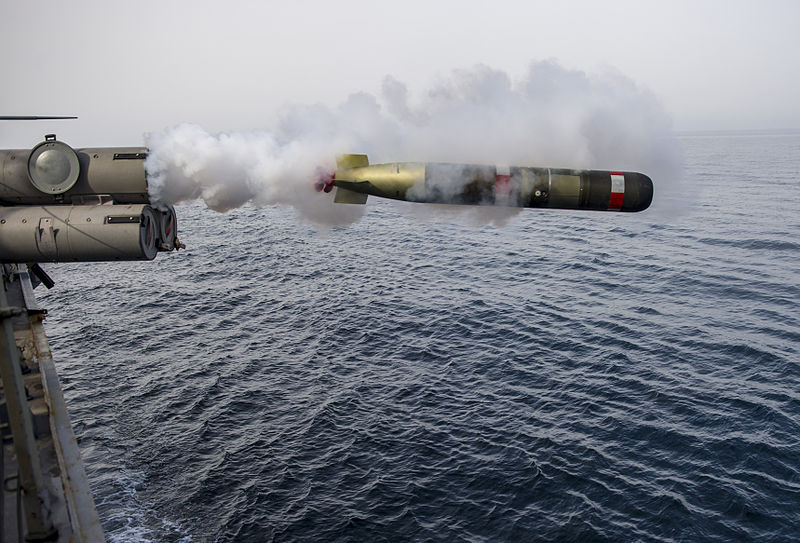
Therefore, the Navy needs to give strong consideration to adapting existing lightweight ASW torpedoes to our next generation of SSNs. Doing so would facilitate the ASW capability of our SSNs while significantly increasing the sub’s capacity to store and deploy much smaller torpedoes. Not as a total replacement for the Mk 48, but rather, as a supplement to the Mk 48 to enable much larger total magazine depth without increasing the displacement of the submarine, to accommodate the ability to attack both surface ships and submarines. Instead of just four 21-inch torpedo tubes on a Virginia-class boat, a combination of 21 inch and 13 inch horizontal tubes optimized for a typical mission profile could work very well.
Finally, whatever combination of horizontal tubes and torpedoes is determined optimal, the weapons themselves need to continue to be updated to the latest technological capabilities as to sensors, self-contained computing (and artificial intelligence) as necessary to track and target submarines and defeat enemy countermeasures, and improved warheads. Hard kill anti-torpedo torpedoes as well as other torpedo countermeasures are also a prime area of development that needs to continue, despite a recent setback with the CAT weapon systems deployed on CVNs.
Nuclear propulsion technology is also advanced today over the old Cold War power plants. The latest generation of naval nuclear reactors as used on the new Ford class CVNs known as the A1B reactor are much more automated and simplified than the previous plants, allowing the highly trained and certified nuclear plant operator crew size to be cut in half as compared to the 1960s era reactors of the Nimitz class CVNs.4 Even more revolutionary nuclear power plant designs are going to be available to submarine designers in the next decade.
Similar technological opportunities abound to more heavily automate every work process throughout the next generation submarines, including artificial intelligence capabilities, and thus can significantly reduce overall crew manning requirements in a submarine. This has already been achieved on the latest surface combatants including the Ford CVNs and the Zumwalt DDGs, which respectively achieved overall manning reductions of 33 percent and 50 percent over their predecessor classes. A similar reduction in SSN crew size also ought to be achievable using the same design approaches and modern automation technology. Reductions in crew size also lead to reductions in hull volume.
Additional technology “insertions” are also available in other areas of submarine design that should be able to create significant impacts in both cost reduction as well as improving the capabilities of our next gen SSNs.
Conclusion
In consequence of all of the considerations described above, it is clear that NAVSEA needs to undertake a project to re-engineer the next generation of SSNs. Navy leadership has publicly stated its intent to reconfigure the surface fleet to significantly reduce the ratio of large surface combatants (LSCs) to small surface combatants (SSCs). The Navy now needs to similarly reconfigure the SSN fleet in favor of smaller boats optimized for sea control over long-range land attack. They must reject the bloated SSN(X) concept which is more of the same, but bigger and more expensive, and go for a new class of SSN that is far smaller and cheaper and thus affordable in much larger numbers than currently planned submarines.
Mr. Truitt is a veteran Cold War-era SSN sailor, qualified nuclear reactor operator, and civilian nuclear test engineer. He is also a degreed civil engineer, environmental scientist, and civil/environmental project manager with extensive experience at both naval and civilian nuclear facilities as well as military and civilian facilities development. His interest today as an author is in forward-looking military preparedness and improvements in both capacity and capability of U.S. naval forces.
Notes
1. USNI News, Ben Werner, March 27, 2019: “Indo-PACOM Commander Says Only Half of Sub Requests are Met”
2. USNI News, Megan Eckstein, April 8, 2019: “Navy Sees No Easy Answer to Balance Future Surface Fleet”.
3. USNI News, Megan Eckstein, May 13, 2019: “Virginia Block VI Subs Will Focus on Special Operations, Unmanned”
4. A1B Reactor; https://www.globalsecurity.org/military/systems/ship/systems/a1b.htm
Featured Image: YOKOSUKA, Japan (Sept. 3, 2010) The Virginia-class attack submarine USS Hawaii (SSN 776) transits Tokyo Bay on the way to Fleet Activities Yokosuka, marking the first time in the history of the U.S. 7th Fleet that a Virginia-class submarine visited the region. This is Hawaii’s first scheduled deployment to the western Pacific Ocean. (U.S. Navy photo by Lt. Lara Bollinger/Released)


